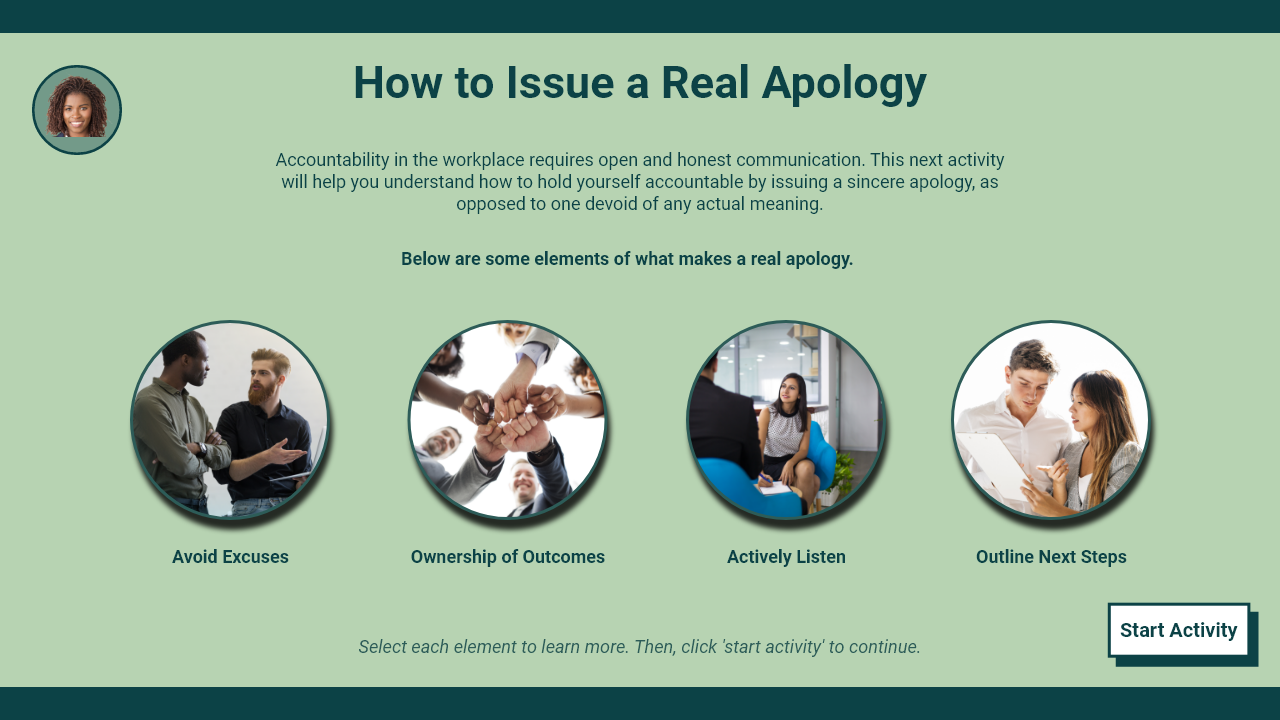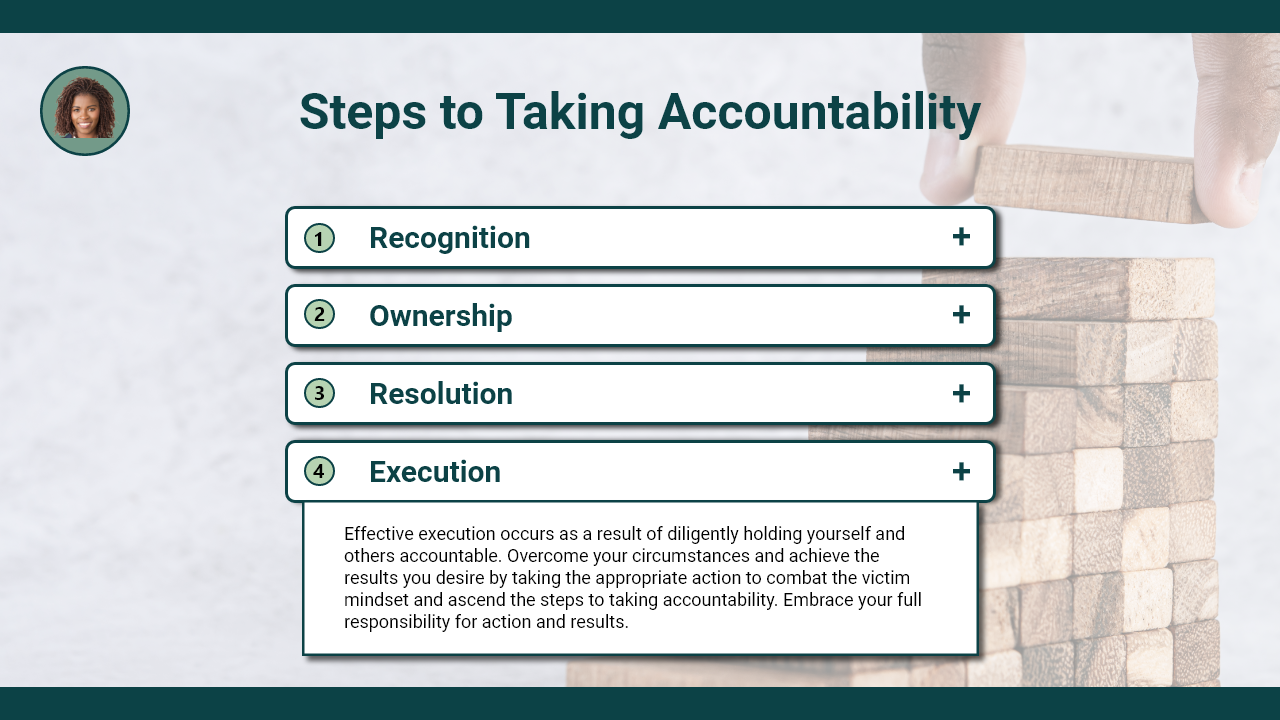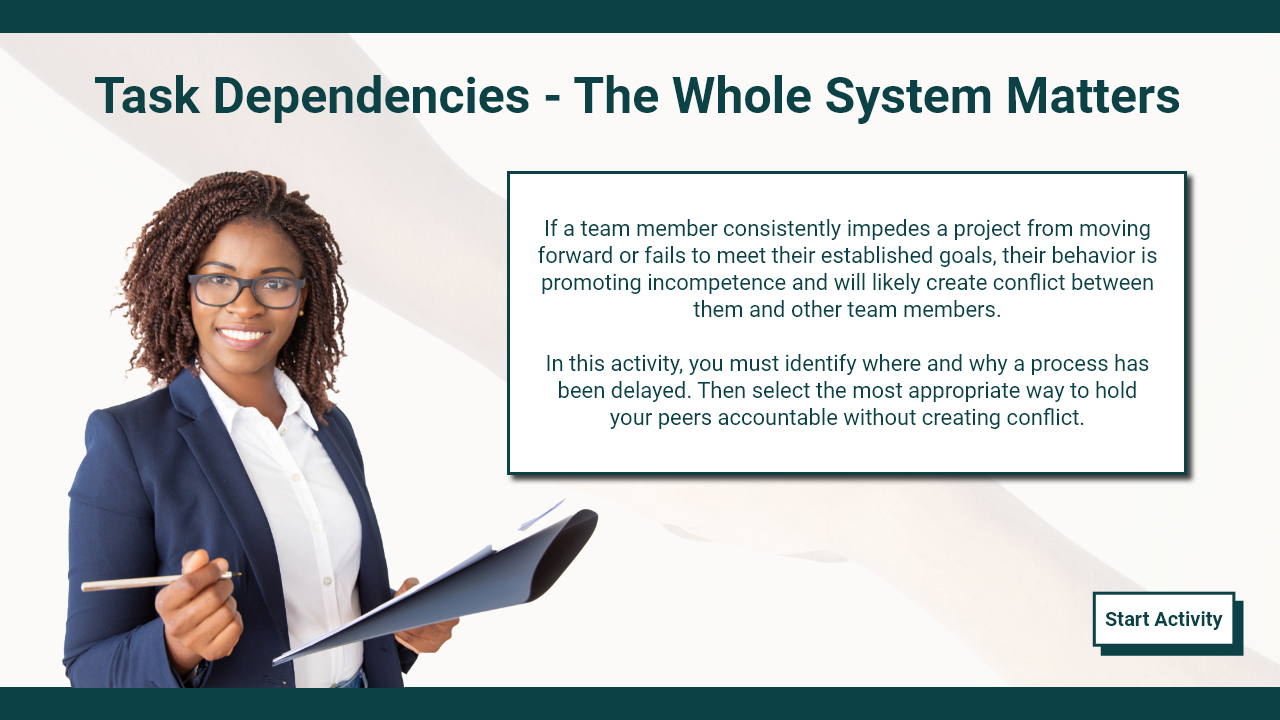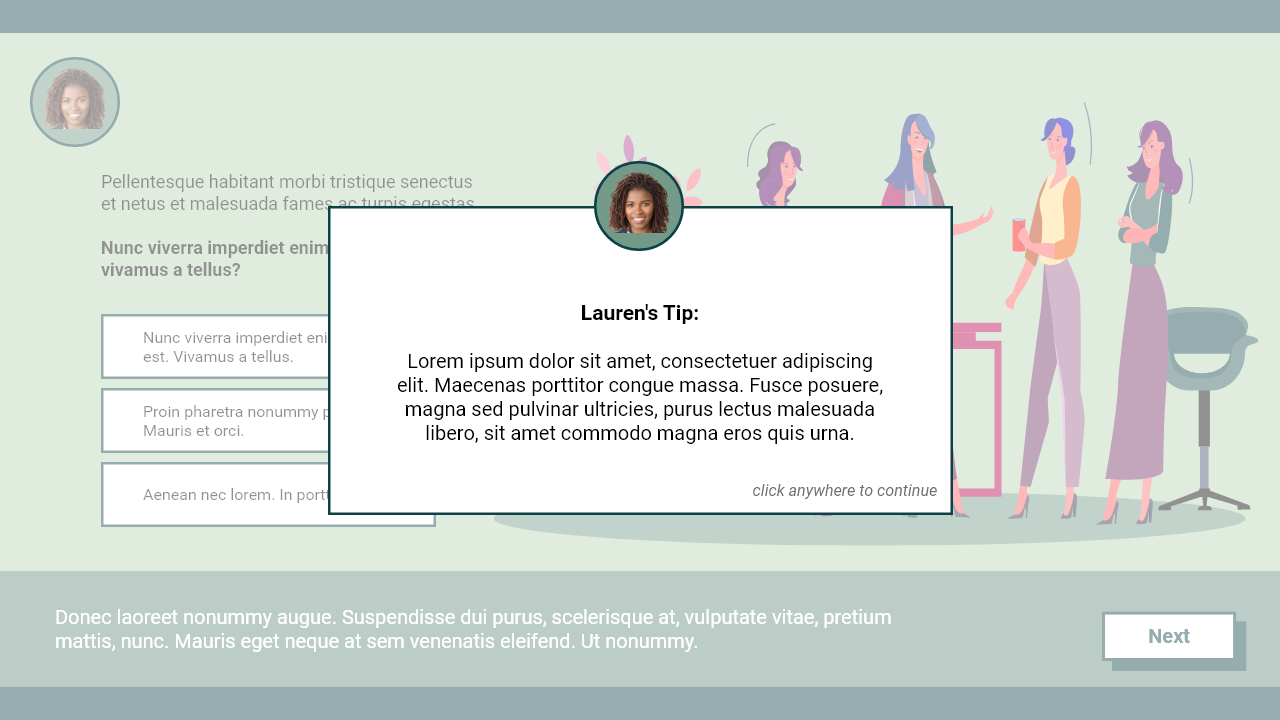Taking Accountability in the Workplace
Overview
This eLearning course was designed to teach employees how to take personal ownership of their decisions and behaviors in the workplace. This course assists learners by exploring accountability best practices to reduce chaos amongst teams and increase willingness to take initiative to problem-solve.
Responsibilities: Instructional Design, eLearning Development, Graphic Design, Animation
Target Audience: Employees of a Non-Profit Organization
Tools Used: GitMind, MS Word, Adobe XD, Adobe Illustrator, Storyline 360, JavaScript
Budget: Medium-High
Year: 2022
The Problem
I designed this course to address accountability issues amongst employees in a non-profit organization. The client expressed that teams were failing to meet program goals due to a lack of accountability and lack of attention to task delegation.
The Solution
I analyzed and proposed a variety of content solutions that would demonstrate to the employees, how to make accountability a core part of their workplace culture. Utilizing a case-based approach, coupled with substantial personalization, allowed me to tailor this project to address extraordinarily specific issues the client was dealing with. I wanted to ensure that the learner would be able to:
Understand and define accountability
Determine ways to develop accountability in teams
Identify the requirements for personal and professional accountability
Isolate areas for further self-improvement
Apply accountability best practices and other important components required to build an accountable organization
Build skills required for accountability, including goal setting, giving and receiving feedback, and delegation
The client was pleased with my suggestions and once I got the green light, I broke ground on the project immediately.
My Process
Working with a blank canvas (no pre-existing content available), I structured the foundation for this course from notes taken in my initial meeting with the client and a couple of review-cycle meetings thereafter. Although I felt confident in my existing knowledge regarding accountability in the workplace, I also conducted thorough research for quality assurance. In addition, I developed an action map, text-based storyboard, and rapid prototype that all assisted in my development of the final product. I was able to turn all of these elements into an interactive, self-paced eLearning tool that is both effective and engaging.
Instructional Design
After producing a set of quantifiable and significant learning objectives, my future content design selections were guided by these objectives. I developed a framework for my decision-making using a combination of Backward Design, Maslow’s hierarchy of needs, and principles from Gardner’s 7 Intelligences – specifically inter- and intra-personal intelligence. I eliminated items that did not contribute to the goals, and I conducted additional research to fill in any content gaps. The content was then organized to ensure logical flow and ease of use.
Action Map
After identifying the need and getting approval for the proposed project, creating an action map allowed me to visualize objectives and develop potential solutions that lead decision-making for the chosen scenarios. The most frequent instances of lack of accountability and solutions needed to combat them were identified in this action map.
Text-based Storyboard
Using the action map, I was able to create a text-based storyboard by developing a relevant narrative that puts these steps into action. This storyboard includes the entire script, questions, consequences, animation and programming notes.
The scenarios in this course are centered on an employee that must navigate various channels to achieve program goals. These “channels” are characters and resources that present the learner with an issue they must address. For example, the learner may be encouraged to take accountability for a task they did incorrectly or even be prompted to hold a co-worker accountable.
In instances where the learner decides against taking accountability or holding someone else accountable, they will see how the negative consequences affect the program as a whole. When learners decide to take accountability or hold another accountable, they will receive positive feedback and see how being honest about liability can get them further and bring about positive outcomes for the program (i.e. building trust, meeting program goals & deadlines).
Visual Mockups
For this course, I used Adobe XD to create visual mockups. I utilized licensed and custom illustrations to bring text to life, from here I created a color palette that assisted me in providing color consistency. This detail, alongside others like font style/size, alignment, repetition, proximity, and more, were thoughtfully incorporated and allowed the entire project to be uniformed and aesthetically pleasing.
Prototype and Finalization
After getting the storyboard approved, I developed a prototype with all programming and the majority of the illustrations and animation incorporated. The content, graphics, arrangement, and functionality of the prototype were reviewed and approved by the client. After receiving and applying feedback from the prototype, I finalized the product.
Results
The client couldn’t be happier with the finished product! When I followed up with the client post-implementation, I was informed that this course was enjoyed and appreciated by learners, especially leadership teams.









